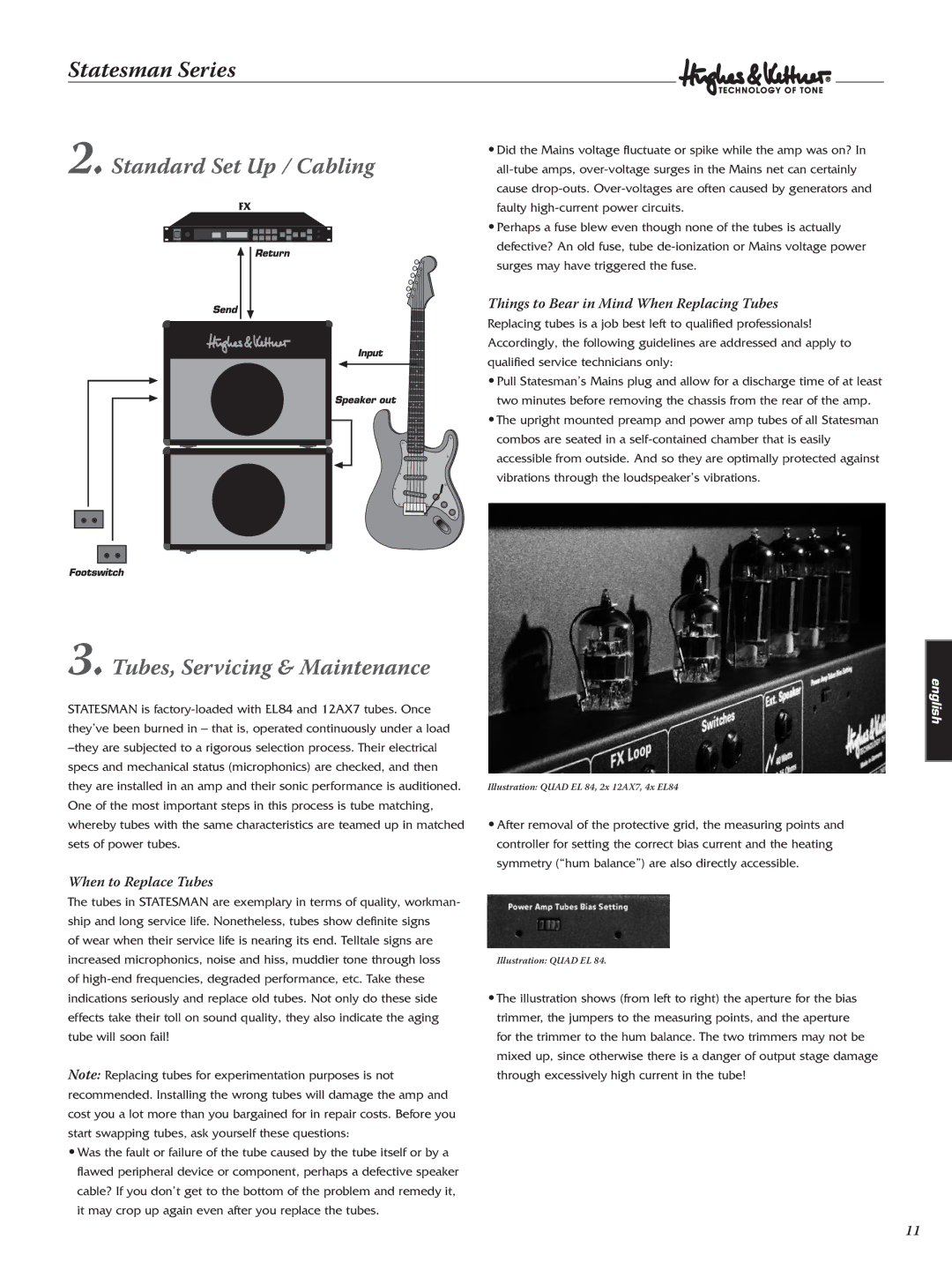
Statesman Series
2. Standard Set Up / Cabling
•Did the Mains voltage fluctuate or spike while the amp was on? In
•Perhaps a fuse blew even though none of the tubes is actually defective? An old fuse, tube
Things to Bear in Mind When Replacing Tubes
Replacing tubes is a job best left to qualified professionals! Accordingly, the following guidelines are addressed and apply to qualified service technicians only:
•Pull Statesman’s Mains plug and allow for a discharge time of at least two minutes before removing the chassis from the rear of the amp.
•The upright mounted preamp and power amp tubes of all Statesman combos are seated in a
3. Tubes, Servicing & Maintenance
STATESMAN is
When to Replace Tubes
The tubes in STATESMAN are exemplary in terms of quality, workman- ship and long service life. Nonetheless, tubes show definite signs
of wear when their service life is nearing its end. Telltale signs are increased microphonics, noise and hiss, muddier tone through loss of
Note: Replacing tubes for experimentation purposes is not recommended. Installing the wrong tubes will damage the amp and cost you a lot more than you bargained for in repair costs. Before you start swapping tubes, ask yourself these questions:
•Was the fault or failure of the tube caused by the tube itself or by a flawed peripheral device or component, perhaps a defective speaker cable? If you don’t get to the bottom of the problem and remedy it, it may crop up again even after you replace the tubes.
Illustration: QUAD EL 84, 2x 12AX7, 4x EL84
•After removal of the protective grid, the measuring points and controller for setting the correct bias current and the heating symmetry (“hum balance”) are also directly accessible.
Illustration: QUAD EL 84.
•The illustration shows (from left to right) the aperture for the bias trimmer, the jumpers to the measuring points, and the aperture for the trimmer to the hum balance. The two trimmers may not be mixed up, since otherwise there is a danger of output stage damage through excessively high current in the tube!
english
11
